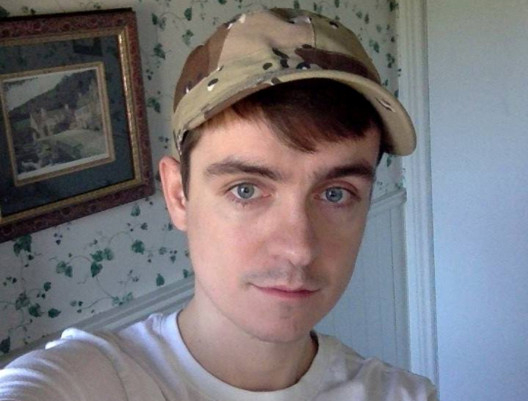
On Monday, a gunman walked into a mosque in Quebec City and murdered six innocent people. And now, as is human after tragedies like this, we’re trying to figure out why. Much has been made of the prime suspect’s support for United States President Donald Trump. After all, we know this act of terrorism happened two days after the Muslim ban took effect at American borders and a day after a mosque in Texas was burned in a suspected act of hate. There has also been considerable attention to Alexandre Bissonnette’s support for National Front leader Marine Le Pen in France, linking his apparent Islamophobia to the wave of far-right populism in Europe. These contexts are crucial. We should ask questions about the relationship between far-right politics and far-right terrorism. We should ask whether the “sermons” of Trump or Le Pen are enough to radicalise someone like Bissonnette.
And yet, Canada is not the US and Quebec is not France. The local context for Bissonnette’s attack is essential to a full picture, essential to understanding how Canadians can support and protect their Muslim neighbours and friends. To its great credit, Quebec has the highest rate of Muslim immigration of any Canadian province. This is because of the history of French colonialism in North Africa and Quebec’s particular sympathy to francophone immigrants. Yet, the mosaic model of multiculturalism (by which I mean multiculturalism in which minority groups are not expected to assimilate, but can, rather, coexist alongside the majority culture) applied in other provinces sits uneasily here. Quebec has a unique cultural heritage within Canada, and the desire to protect that heritage — signified, for example, by French language protection measures — can come into conflict with the ideological underpinnings of mosaic multiculturalism.
So too can Quebec’s secularism, which is especially cherished because of the hard-won separation of church and state during the quiet revolution of the 1970s. The principle of “reasonable accommodation” has been part of the Canadian Charter of Rights and Freedoms since 1985. This means that reasonable adjustments should be made to existing systems based on an individual’s needs.
In Quebec in 2007, cases concerning accommodations requested by Sikhs, Muslims and Hasidic Jews appeared in the press, prompting much outrage and some xenophobia from a majority culture that deemed the demands excessive. Fuelled by political opportunism, these debates escalated into a crisis in the province. Bissonnette would have been 20 at the time. In 2013, when I first moved there, I was surprised to find public discourse rife with conflict regarding what Muslims could and could not wear to work. This was certainly not what I had expected from multicultural Canada. The Parti Quebecois (PQ), then in power provincially, had proposed a Charter of Quebec Values, which, if passed, would forbid public workers from displaying any symbol of their religious affiliation. This was aimed none-too-subtly at the province’s Muslims, with the Jewish population caught in the crossfire.
Proponents of the charter met accusations of hypocrisy when they claimed that prominent Christian symbols in Quebec public life — such as the great big glow-in-the-dark cross on top of Mont Royal — had been around so long that they’d simply become secular. Bissonnette would have been 24. When the liberals came to power provincially in 2014, the Charter lost its political momentum.
Yet, Presse Canadienne statistics show 59 per cent of Quebecers were still in favour of it as late as 2015. A recently published study by Frederick Nadeau and Denise Helly examines 10 pro-charter Facebook groups that arose in response to the public debates. They note that these groups share many characteristics with the European and American extreme right, including ethno-nationalism, populism and a rejection of multiculturalism. The archived Facebook profile in Bissonnette’s name shows that he liked four distinct pages associated with the PQ. While I don’t know if he directly engaged with any of the pages studied by Nadeau and Helly, it is very reasonable to suggest that — in the relatively small world of online right wing Quebec politics — he encountered some of the rhetoric they describe, especially as he was known to feminist and refugee-friendly groups in Quebec as an internet troll.
If Trump and LePen are implicated in Bissonnette’s radicalisation, surely so is former PQ leader Pauline Marois. The accommodation debates did not die with the PQ’s charter. Last year, Phillippe Couillard’s liberal government proposed unnecessary but popular legislation banning people (read: Muslim women) from covering their faces when receiving public services. During the leadership race for the PQ, Jean-Francois Lisee suggested that an AK47 could be hidden under a burqa. And the centre-right Coalition Avenir Quebec called for measures against police officers in hijab and the burkini. Clearly, Canadians do not need to look across the border or the Atlantic to find rhetoric relevant to Bissonnette’s apparent Islamophobia.
I am drawing attention to these contexts not to vilify my adopted home, which I love, but, rather, to encourage some national introspection. If Canadians are going to stand with their Muslim neighbours and friends, then we must begin to recognise the continuum between intolerance and violence.
This is not to say that we can’t debate what constitutes a reasonable accommodation in a multicultural society; it is, rather, to suggest that we might spend a little less time talking about what Muslims are wearing to work and a lot more talking about those who might want to kill them.
— Guardian News & Media Ltd
Emer O’Toole is assistant professor of Irish performance studies at the School of Canadian Irish Studies, Concordia University. She is the author of the book Girls Will Be Girls, published by Orion.








